| ~~~~~~~~~~~~~~~~~~~~~~~~~~~~~~~~~~~~~~~~~~~~~~~~
National Association of Rocketry
Educator's Newsletter
June 2020
~~~~~~~~~~~~~~~~~~~~~~~~~~~~~~~~~~~~~~~~~~~~~~~~ |

Student Postcards to Space
Blue Origin
https://www.blueorigin.com/ a private rocket company, has announced they are sponsoring a "Club for the Future" to inspire students to study STEM. The first mission is to launch ideas on a postcard into space and back. See their website-
The way it works is to draw your idea on a postcard and then mail it to the Club. The Club will put your postcard on one of Blue Origin's New Shepard rockets and launch it to space! Upon your postcard's return, it will be stamped "Flown to Space" then mailed back to you as a special keepsake. As cool as that is, it would be cooler if you had already launched your postcard in a model rocket before you send it to Blue Origin and stamp it "Flight Tested" with the date. The NAR Education Committee suggests you participate in these flights this way. Science teachers and TARC teams, can you see your class doing this? Sections could also fly cards for local kids and 'certify' them. As simple as it might be to launch a card in a small rocket HPR enthusiasts could launch a
lot of cards in a big rocket. There's many possible ways to use the Blue Origin Club for the Future program to make your own student activities more exciting and fun.
Aim high!
Vince Huegele
NAR Education Chairman
|
|
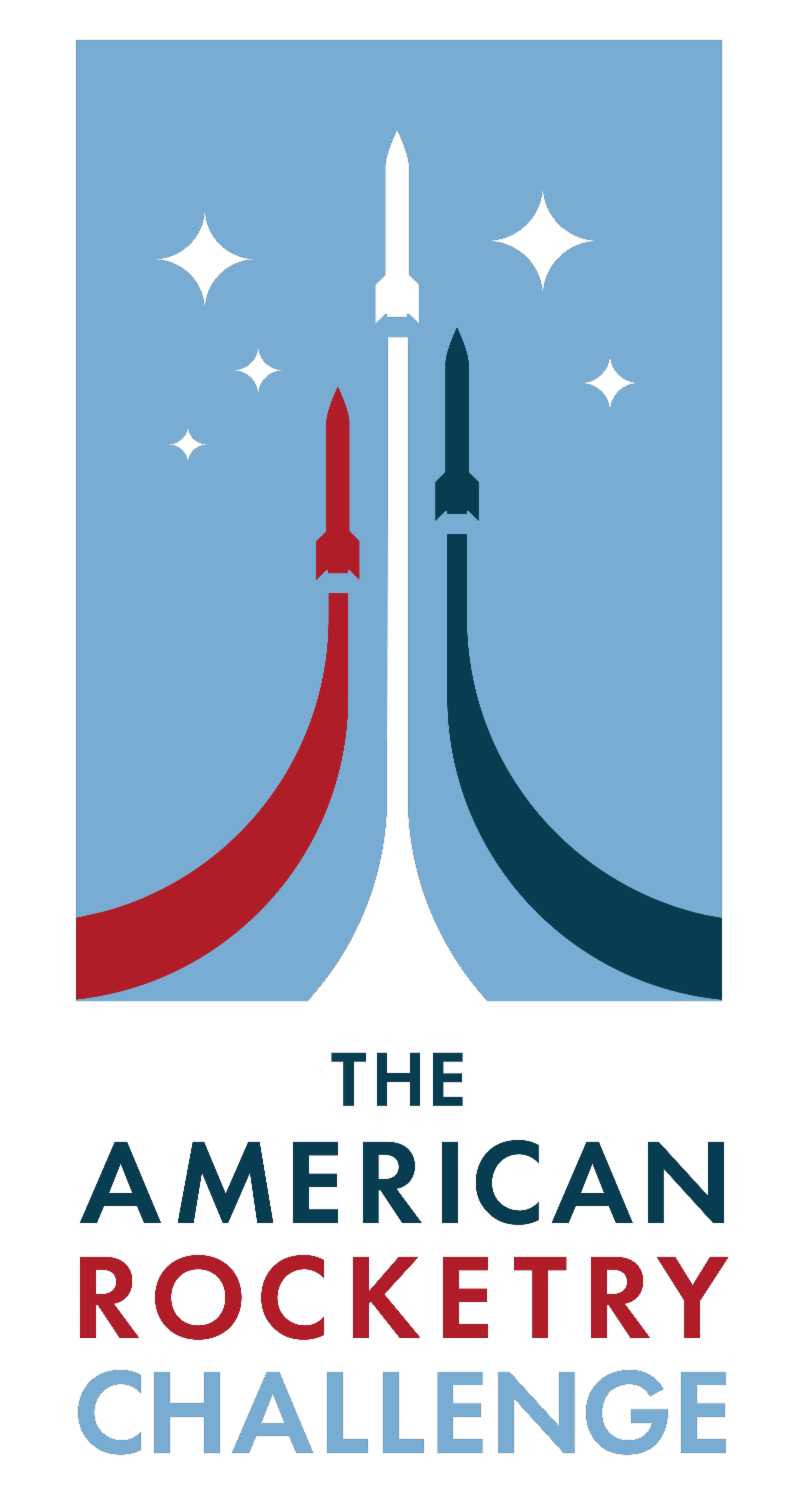 2020 and 2021 The American Rocketry Challenge (TARC)
2020 and 2021 The American Rocketry Challenge (TARC)
The TARC
is the world's largest rocket contest, sponsored by the Aerospace Industries Association (AIA) and the National Association of Rocketry in partnership with AAPT, DoD, NASA, and AIA member companies.
The effect of the COVID-19 pandemic has made a tremendous impact on the challenge. As a reminder:
- The 2021 season of the American Rocketry Challenge will use the same rules as the 2020 season. All registered 2020 teams will be automatically registered for the 2021 season. No additional action or payment is required to enter the 2021 season. Your current registration will remain active. Those teams wishing to withdraw and no longer compete next year may receive a refund of their registration fee.
- Flying and submitting qualification flights will remain suspended until September 1, 2020, or such time that AIA and the NAR determine that it is safe for launches to resume in all 50 states.
- Teams may freely add or drop students regardless of 2020 qualification flight status.
- Teams that have already submitted qualification flights may either keep all their current scores or withdraw all their flights. Teams that have submitted only one or two qualification flights may keep those and still fly their remaining flights when flying resumes.
Congratulations
to Nitrogen One Aerospace Team from Oregon Episcopal School in Portland, OR - First Place
Marketing Competition
, Team Graveyard from Newport High School in Bellevue, WA - First Place
Presentation Competition
, and Dawn Xploration from Technology, Exploration, and Career Center East in Lewisville, TX - First Place
Engineering Notebook Competition
!!
Their winning materials are posted on the TARC website "results" page.
NAR 4322 L3
NAR TARC Manager
|
Interested in a Fellowship this Summer?
Industry Initiatives for Science and Math Education (IISME), founded in 1985, seeks to transform teaching and learning through industry-education partnerships. IISME exists to address the critical need for a strong, highly skilled workforce in math, science and technological fields. IISME recruits sponsors in California from Alameda, Contra Costa, Marin, Sacramento, San Francisco, San Mateo, Santa Clara, and Santa Cruz Counties. The majority of Fellowships are offered in the Palo Alto, Sunnyvale, Santa Clara and San Jose Area.
This industry-education partnership focuses on teachers as the primary agents for effecting meaningful change in mathematics and science education. IISME provides teachers with experiences and tools they need to adapt their practices and change their schools so that all students are prepared to be lifelong learners, responsible citizens and productive employees. http://www.igniteducation.org/
|
|
INSPIRING OTHERS
 Blue Origin Blue Origin
Club for the Future
The Club's mission is to inspire youth to pursue careers in STEM and help visualize the future of life in space. Founded by Blue Origin in 2019, the Club brings together teachers and K-12 students from around the world to engage in activities giving youth direct access to space through Blue Origin's reusable rockets.
Space is an avenue for all types of learning, not just for traditional science. Club for the Future's goal is to support teachers who want to bring the access of space to their classroom by providing inquiry and project-based STEM activities that fit into existing curriculum, pathways to 21st-century careers, and insight to the space economy and how it relates to our student. To get started, try one of our three lessons that build future-ready skills by incorporating STEM with the liberal arts and practical arts. To integrate a multimedia component, try using our lessons on FlipGrid where students present their knowledge and ideas through a video reflection - a great way for your entire classroom to learn virtually together.
Club for the Future is asking students from around the world to send us postcards answering the question:
WHAT WOULD YOU BUILD IN SPACE, THAT COULD HELP THE EARTH?
Once you have your idea, draw it on a postcard, and then mail it to the Club. The Club will put your postcard on one of Blue Origin's New Shepard rockets and launch it to space! Upon your postcard's return from space, it will be stamped "Flown to Space" then mailed back to you as a special keepsake. We have already launched thousands of students' ideas to space - now let's send yours!
If you have more than one postcard, or are a classroom, a school, or organization, you may package multiple postcards into one large envelope or box to simplify shipping. Club for the Future will happily re-package these postcards and return them to back to the sender for distribution.
This is just the beginning. Sign up and you'll never miss our future activities. As the Club grows and more content and activities are added, you'll be the first to know...
Join the Club! Or if you any questions, reach out to the team at
[email protected]!
The North Carolina School of Science and Mathematics
The North Carolina School of Science and Math Summer Accelerator Program extends to a global audience our 30 years of experience offering innovative courses and opportunities to talented high school students.
The Accelerator program offers unique, high-level courses in an innovative format that incorporates both residential, hands-on learning and online education. This summer, explore aerospace engineering by designing and launching your own rocket. Analyze the connection between music and math and compose your own work in Music of the World and the Math Behind It. Uncover the secrets of the dead and real-world excavation methodology in Death and Burial Around the World.
Highly skilled faculty focus their talents on building upon the strengths of high-achieving students in advanced science and math topics in the classroom. Student Life Instructors offer a valuable resource and help provide a safe and enjoyable residential experience for students out of the classroom. NCSSM crafts unique college-level academic experiences, as a constituent and flagship high school of the University of North Carolina system, in a setting designed specifically for high school students.
Explore complex topics, collaborate with peers from around the globe, and get hands-on experience that will kick start college readiness and career interests this summer.
Innovation Now
How about a daily 90 second radio program that features highlights in aeronautics and aeronautics technology, science, history, innovations, research, and inventions from the aerospace industry? Try this one out!
www.innovationnow.us
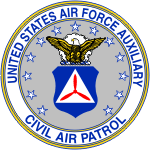 Civil Air Patrol Civil Air Patrol
Collectively, we can have a remarkable impact on a partnering national organization. Take the time to contact a
local Civil Air Patrol squadron near you and Pay Forward!
You can find a local squadron by entering your zip code or city and state in the online unit locator. Each of these squadrons would welcome your insights and camaraderie! Additionally, the Civil Air Patrol has an Advanced Rocketry Program (and Guide) for those folks who enjoy High Power Rocketry as well as Mid and Low Power...It's a great opportunity to share experiences and Pay Forward!
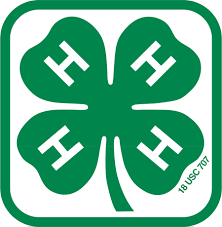 4-H 4-H
The
Rocketry School Enrichment and After School Enrichment Program
helps students meet Pennsylvania Academic Standards in science. 4-H project books are available for
Delaware County, Pennsylvania
classroom teachers, home school families, and after school clubs to use with students.
Estes
Promote STEM with Reach For The Stars - National Rocket Competition
There is still time to get your kids into the Reach for the Stars - National Rocket Competition. The deadline for entering is August 31st, which gives museums, schools, scouts and youth groups enough time to get their supplies and run a local event. This year's Competition was kicked off by famed author Homer Hickam in Coalwood, West Virginia at the October Sky Festival - with the original "Rocket Boys" giving the countdown.
Special pricing makes the Competition very affordable. In most cases the cost of the rocket kit, supplies for two launches, achievement certificate and Competition registration is less than the list price of the rocket kit alone. A step-by-step video and on-line help, supplied free with order, are available to guide you. The Competition is for ages 10 to adult, with three levels determined by age. Time and supplies are limited, so get started now! More information is at TheRocketman.net.
|
| RESOURCES
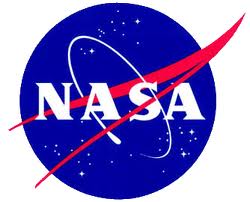 NASA Makes Finding Teaching Materials Easy NASA Makes Finding Teaching Materials Easy
NASA's Education Materials Finder will help you locate resources that can be used in the classroom. Users may search by keywords, grade level, product type and subject. With hundreds of publications and Web sites indexed, the finder is a great way to
locate NASA educational resources.
Rocketry School Supplies Provided by Donors
As teachers, you know your students' needs best.
Donorschoose.org is available to provide an avenue for public school teachers to submit project requests for the specific materials their students need to learn.
As their name implies, donors choose which projects to support. Once a project is funded, they deliver the materials directly to the school.
In return, teachers submit photos of the project in use and thank-you notes from students, which are then sent to the project's donors.
|
 National Association of Rocketry (NAR) Offers Teachers and Youth Group Leaders Resources
National Association of Rocketry (NAR) Offers Teachers and Youth Group Leaders Resources
Free resource downloads produced by members who have helped teachers and youth group leaders like yourself all over the United States.
|
|
Space History
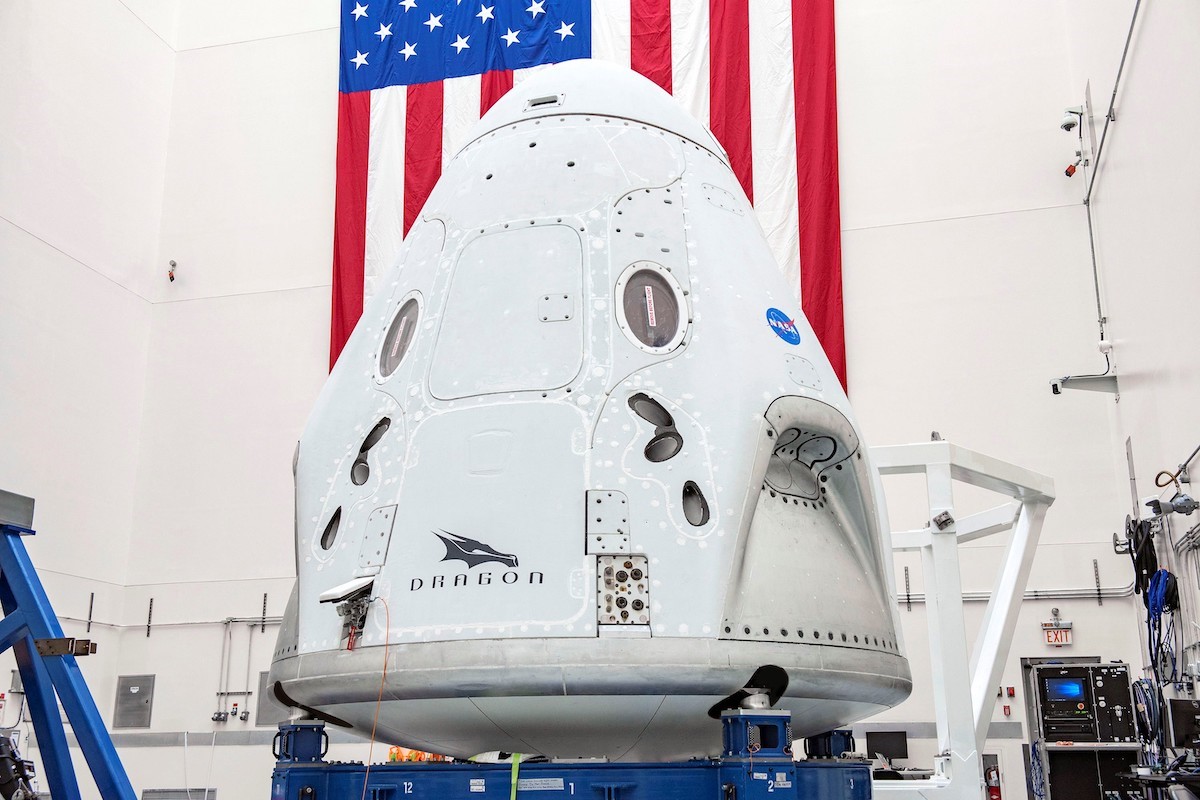
30 May 2020:
Return to Flight...SpaceX has launched NASA astronauts Doug Hurley and Bob Behnken on their historic Demo-2 mission to the International Space Station!
This is the first time astronauts have launched from American soil since the final Space Shuttle flight in 2011 and the first time a private company, rather than a national government, has sent them into orbit.
Hurley and Behnken blasted off from Kennedy Space Center's historic launch pad 39A, the same pad used for the Apollo and Space Shuttle programs, at 3:22 p.m. EDT Saturday.
While there were concerns bad weather would force Saturday's launch to be scrubbed again (the previous attempt was on 27 May), the mission was able to proceed as planned. Launched atop a SpaceX Falcon 9 rocket, Hurley and Behnken traveled to the International Space Station in a Crew Dragon spacecraft.
After a short journey into orbit, Crew Dragon began its 19-hour journey to the orbiting space station.
Meanwhile, the Falcon 9 booster successfully returned to Earth, landing on a drone ship in the Atlantic.
"Today was just an amazing day," said NASA administrator Jim Bridenstine, shortly after the launch. "I can breathe a sigh of relief but I can also tell you that I'm not going to celebrate until Bob and Doug are home safely."
Bridenstine added that he was praying for the astronauts during the liftoff. "I have heard that rumble [of a rocket launch] before, but it's a whole different feeling when you've got your own team on that rocket."
The duration of the astronauts' stay on the orbiting space lab is yet to be determined.
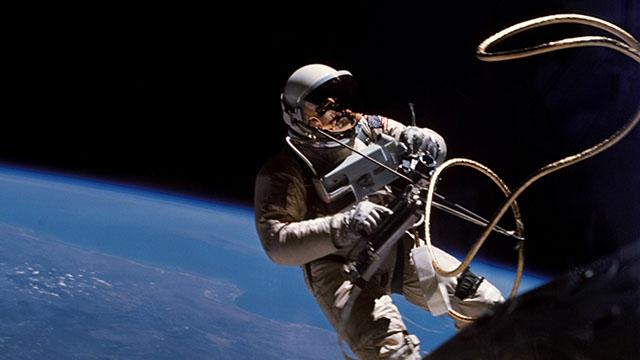 3 June 1965:
3 June 1965: Astronaut Edward H. White II became the first American to perform what in NASA parlance is referred to as an Extra Vehicular Activity (EVA). In everyday terms; a spacewalk.
White, Mission Commander James A. McDivitt and their Gemini IV spacecraft were launched into low Earth orbit by a two-stage Titan II launch vehicle from LC-19 at Cape Canaveral Air Force Station, Florida. The mission clock started at 15:15:59 UTC on Thursday, 03 June 1965.
On the third orbit, less than five hours after launch, White opened the Gemini IV starboard hatch. He stood in his seat and mounted a camera to capture his historic space stroll. He then cast-off from Gemini IV and became a human satellite.
White was tethered to Gemini IV via a 15-foot umbilical providing oxygen and communications to his EVA suit. A gold-plated visor on his helmet protected his eyes from the searing glare of the sun. The space-walking astronaut was also outfitted with a hand-held maneuvering unit using compressed oxygen to power its small thrusters. And, like any good tourist, he also took along a camera. He
had the time of his all-too-brief life in the 22 minutes he walked in space. The sight of the earth, the spacecraft, the sun, the vastness of space, the freedom of movement all combined to make him exclaim at one point, "I feel like a million dollars!".
Presently, it was time to get back into the spacecraft. But, couldn't he just stay outside a little longer? NASA Mission Control and Commander McDivitt were firm. It was time to get back in; now! He grudgingly complied with the request/order, plaintively saying: "It's the saddest moment of my life!"
As Ed White got back into his seat, he and McDivitt struggled to lock the starboard hatch. Both men were exhausted, but ebullient as they mused about the successful completion of America's first spacewalk.
Gemini IV would eventually orbit the Earth 62 times before splashing-down in the Atlantic Ocean at 17:12:11 GMT on Sunday, 07 June 1965. The 4-day mission was another milestone in America's quest for the moon.
The mission was over and yet Ed White was still a little tired. But this was really quite easy to understand. In the time he was working outside the spacecraft, Gemini IV had traveled almost a third of the way around the Earth...
Now, that's a long walk!
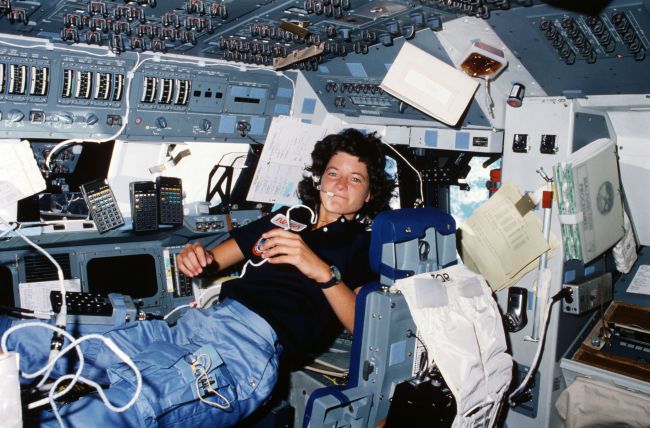 18 June 1983: Sally Kristen Ride became the first American woman to go into space when she flew on the space shuttle Challenger (STS-7) as a mission specialist, NASA's seventh shuttle mission. The mission returned to Earth on June 24. Tasks on the mission included launching communications satellites for Canada and Indonesia. The astronauts also conducted the first successful satellite deployment and retrieval in space using the shuttle's robotic arm. During the flight, Ride became the first woman to operate the shuttle's robotic arm. 18 June 1983: Sally Kristen Ride became the first American woman to go into space when she flew on the space shuttle Challenger (STS-7) as a mission specialist, NASA's seventh shuttle mission. The mission returned to Earth on June 24. Tasks on the mission included launching communications satellites for Canada and Indonesia. The astronauts also conducted the first successful satellite deployment and retrieval in space using the shuttle's robotic arm. During the flight, Ride became the first woman to operate the shuttle's robotic arm.
Ride's history-making Challenger mission was not her only spaceflight. She also became the first American woman to travel to space a second time when she launched on another Challenger mission, STS-41-G, on Oct. 5, 1984. The mission lasted nine days. On this flight, she used the shuttle's robotic arm to remove ice from the shuttle's exterior and to readjust a radar antenna. Ride was assigned to a third shuttle mission, but her crew's training was cut short by the Challenger disaster in January 1986.
Ride died of cancer in 2012.
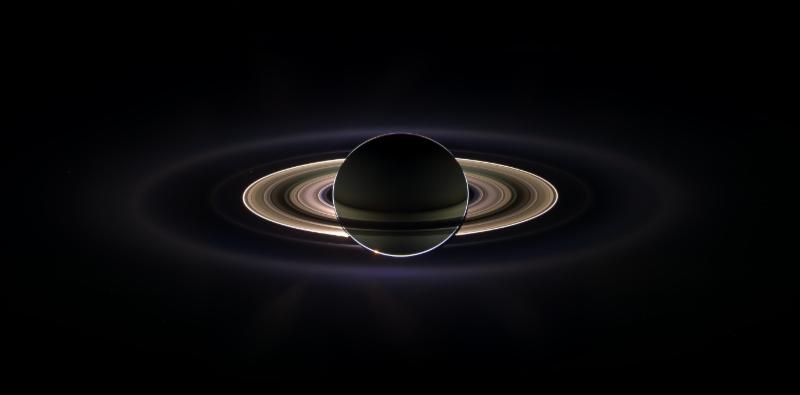 30 June 2004:
It took seven years for Cassini to make the trip from Earth's surface to Saturn's orbit. The two-story-tall spacecraft reached Saturn on June 30, 2004, to begin unprecedented surveys of the planet and its brilliant rings, along with Saturn's eclectic system of moons. As the mission came to a close, NASA opted to plunge the spacecraft into Saturn to prevent it from accidentally contaminating one of the moons if it were left to drift around in space. 30 June 2004:
It took seven years for Cassini to make the trip from Earth's surface to Saturn's orbit. The two-story-tall spacecraft reached Saturn on June 30, 2004, to begin unprecedented surveys of the planet and its brilliant rings, along with Saturn's eclectic system of moons. As the mission came to a close, NASA opted to plunge the spacecraft into Saturn to prevent it from accidentally contaminating one of the moons if it were left to drift around in space.
Cassini also carried a second spacecraft along with it, a probe called Huygens, released to study the moon Titan up close. Huygens parachuted to the surface of the moon, relaying data on conditions there until its batteries ran out.
Cassini, built and operated from the Jet Propulsion Laboratory in Pasadena, California, lifted off from Cape Canaveral, Florida, in 1997 atop a Titan IVB rocket. The launch capped months of processing on the spacecraft and booster to make sure everything would work correctly on launch day and Cassini would be set on its correct path.
The Titan IVB rocket was NASA's largest expendable booster at the time.
Despite the size of the rocket, Cassini would still take seven years to reach Saturn. It would fly a precise path through the inner solar system building up speed by passing near Venus and Earth so it could slingshot out beyond Mars and Jupiter to rendezvous with Saturn. Getting on this path correctly at the start was the focus of the launch team...
The payoff was a wealth of photos and data of one of the solar system's most captivating locations!
|
|
| |
 Quick Links... Quick Links...
~~~~~~~~~~~~~~~~~~~~~~~~~~~~~~~~~~~~~~~~~~~~~~~~
|
|
| |
|